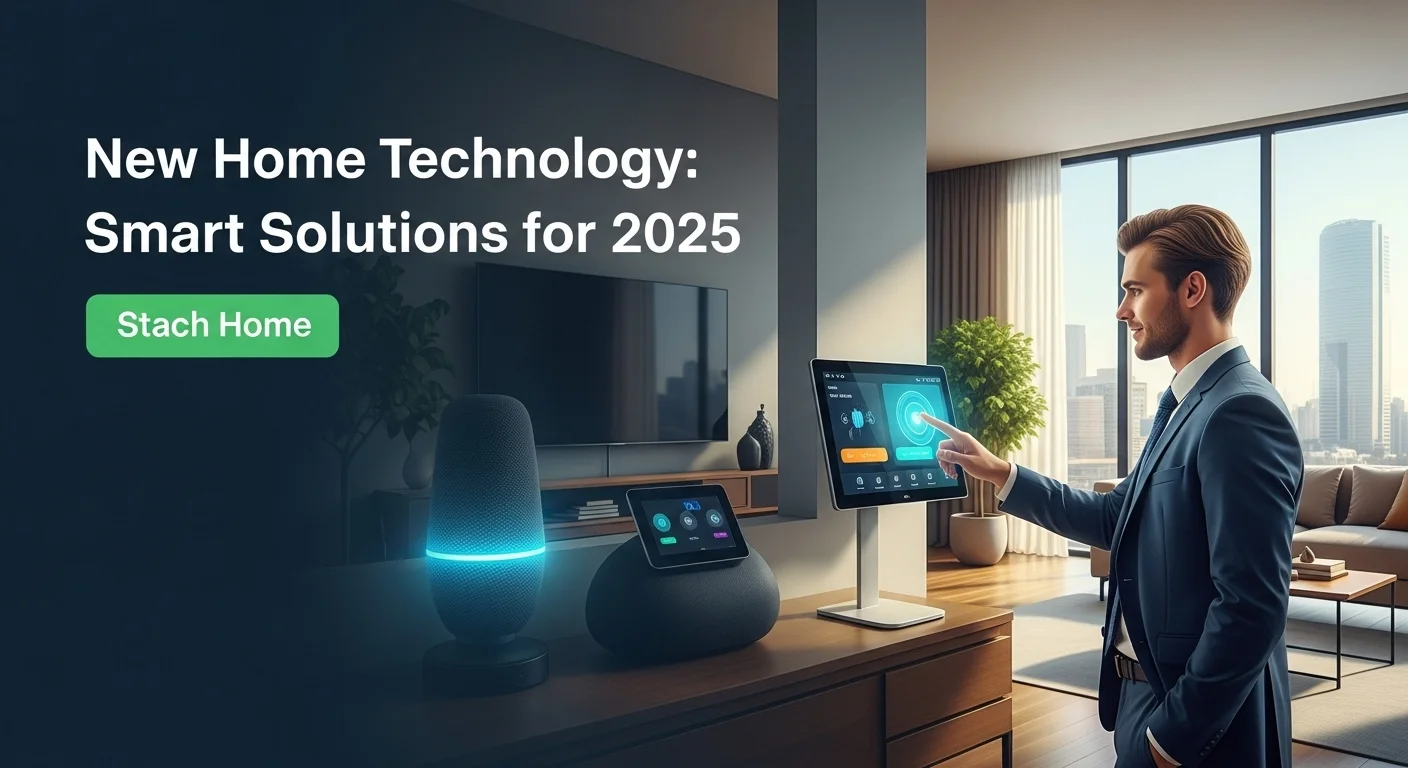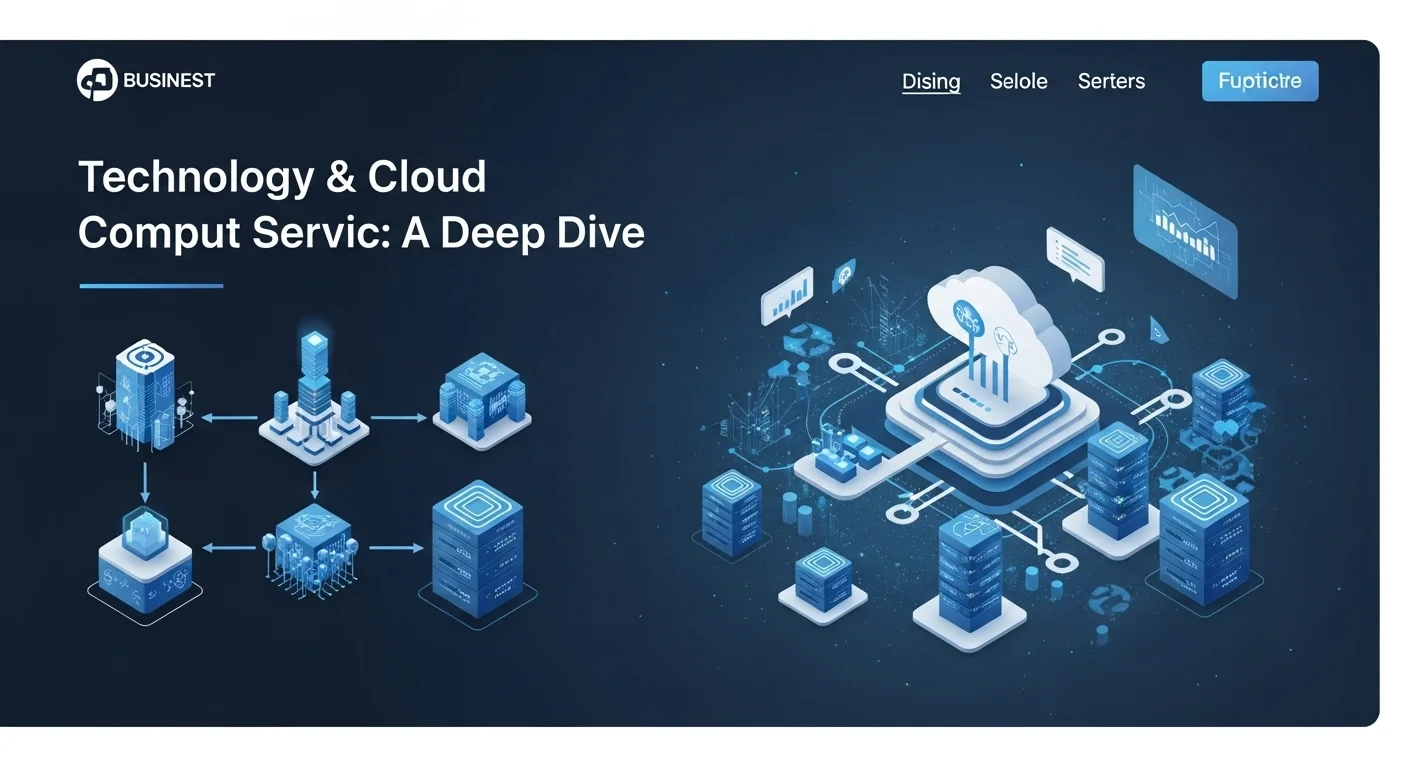From Chaos to Control: My Guide to Assistant Automation for Your Home and Business

Executive Summary
Let’s be honest, we all have tasks we wish would just do themselves. For years, I've been fascinated by making that happen, both in my business and at home. That's the magic of Assistant Automation. It's not just about fancy chatbots or voice assistants; it's about giving yourself back time and mental energy. For businesses, it means taking the robotic, repetitive work off your team's plate so they can focus on what really matters—growth and innovation. At home, using platforms like Home Assistant, it's about creating an environment that anticipates your needs, from warming the house before you wake up to making sure everything is secure when you leave. This isn't some far-off future tech; it's happening right now. I've seen it transform workflows and simplify daily life, and it's only getting smarter. This guide is my experience distilled—a look at how you can harness this power, too.
Table of Contents
Table of Contents
- What Exactly is Assistant Automation?
- The Tech Behind the Magic: AI and Machine Learning
- The Power of Open-Source: My Journey with Home Assistant
- Building Your Fortress: Smart Alarm Automation
- Breathing New Life into Old Systems with Konnected
- Smarter Comfort: Next-Level Climate Control
- Bridging Worlds: Unifying Your Tech with HomeKit
What Exactly is Assistant Automation?
In my years working with this technology, I've found the best way to describe Assistant Automation is simple: it's about teaching technology to handle the boring stuff. Think of it as using smart software, AI, and learning algorithms to perform tasks you'd otherwise have to do yourself. This isn't just one thing; it's a huge spectrum. On one end, you have the voice assistants we all know, like Siri or Alexa, that can set a timer or play a song. On the other, you have incredibly sophisticated systems in the business world, known as Robotic Process Automation (RPA), that can manage invoicing and data entry for an entire company. The real importance of this tech isn't just convenience. It's about boosting efficiency, cutting down on human error, and freeing us up to be more creative and strategic. It's a genuine game-changer for staying competitive and innovative today.
The secret sauce behind modern Assistant Automation is the huge leap we've made in Artificial Intelligence (AI), especially in two areas: Natural Language Processing (NLP) and Machine Learning (ML). In simple terms, NLP is what lets a machine understand what you mean when you talk or type, making things like chatbots possible. Machine Learning is the 'brain' that allows these systems to get smarter over time. Instead of being programmed for every single possibility, they learn from experience, just like we do. This is why your smart assistant gets better at understanding your accent or predicting what you need. For a business, this is pure gold. I've seen companies deploy AI assistants to handle thousands of customer questions at once, giving instant answers and letting human agents focus on the really tough problems. This leads to happier customers and a massive drop in operational costs. It’s how businesses become faster and more agile.
The Power of Open-Source: My Journey with Home Assistant
While the corporate world has its big-budget tools, the most exciting developments for me have been in the home, thanks to the open-source community. My personal favorite, and the heart of my own smart home, is Home Assistant. It’s a powerful, free platform that puts privacy first and gives you total control. Unlike the walled gardens of many commercial products, Home Assistant is a central hub that can talk to thousands of different devices from hundreds of brands. This is where you can truly let your imagination run wild and build automations that are perfectly tailored to your life, not a corporation's idea of it.
Building Your Fortress: Smart Alarm Automation
One of the first things I set up was a solid security system. The concept of alarm automation home assistant lets you build something far more powerful than an off-the-shelf system. For instance, I created an automation where if a window sensor is tripped while we're away, it doesn't just sound a siren. It flashes every light in the house red, blasts a warning message through all my smart speakers, and sends a notification to my phone with a live camera feed. This level of customized response provides real peace of mind. Your home assistant alarm automation can be as simple or as layered as you like, with different modes for when you're home, away, or sleeping. It’s security that adapts to your life, not the other way around.
Breathing New Life into Old Systems with Konnected
Many older homes, mine included, came with a basic wired alarm system just sitting on the wall, unused. Hardware like Konnected is a complete game-changer here. I used a konnected home assistant automation setup to replace the old, dumb alarm panel brain with a smart one. Suddenly, every wired sensor—from doors to motion detectors—became a smart device in Home Assistant. This was incredible because these wired sensors are ultra-reliable (no batteries to die!). My 'dumb' door sensor is now not just for security; it also triggers a 'welcome home' lighting scene and tells my thermostat to kick in. This is the beauty of integration: one piece of hardware can serve dozens of purposes.
Smarter Comfort: Next-Level Climate Control
Beyond security, I'm obsessed with making my home comfortable and energy-efficient. My home assistant climate automation setup is one of my proudest creations. It does more than just follow a schedule. It knows when the last person leaves the house and sets the thermostat to an eco mode. It checks the weather forecast and, if a hot day is coming, it will pre-cool the house during cheaper, off-peak electricity hours. It's even connected to my window sensors. If my kids leave a window open for more than five minutes, it automatically shuts off the HVAC in that room and sends me a friendly reminder. This is intelligent automation that saves money and keeps everyone comfortable without a second thought.
Bridging Worlds: Unifying Your Tech with HomeKit
As an Apple user, I love the slick and secure experience of HomeKit. The problem? Not every cool new gadget supports it. This is where Home Assistant becomes an indispensable translator. The home assistant homekit automation feature lets me bridge almost any device into the Apple ecosystem. That cheap smart plug I bought that wasn't HomeKit compatible? I added it to Home Assistant, and with a few clicks, it appeared in my Apple Home app, controllable with Siri. This bridge breaks down the walls between different brands, letting you choose the best device for the job, not just the one with the right logo on the box. It’s this power of integration and empowerment that makes Assistant Automation so fundamental to modern technology.

My Complete Playbook for Assistant Automation
Assistant Automation is transforming how we work and live, but getting started can feel overwhelming. In my work, I've found that success comes down to choosing the right strategy and the right tools. This is my playbook for harnessing automation effectively, whether you're running a business or supercharging your home with Home Assistant.
Business Strategy: The Tools I Recommend
In a business setting, the goal of Assistant Automation is always about creating value—saving time, cutting costs, and improving experiences. I always advise starting by targeting the tasks that are repetitive, high-volume, and follow clear rules. Think about processing invoices, onboarding new hires, or answering common customer questions. Here are the tools I rely on:
- Robotic Process Automation (RPA): When you need to interact with legacy systems without APIs, tools like UiPath or Automation Anywhere are brilliant. They create software 'bots' that act like a human, clicking, typing, and moving files. It’s perfect for automating old-school digital workflows.
- Integration Platforms (iPaaS): For connecting modern cloud apps, my go-to tools are Zapier and Make. They are the glue of the internet, letting you create powerful workflows like, 'When a customer fills out a form on my website, add them to my CRM and send a welcome email.'
- AI-Powered Chatbots: To level up customer service, I look to platforms like Google Dialogflow or IBM Watson Assistant. These aren't just dumb bots; they understand what users are asking and can handle complex conversations, only passing things to a human when truly necessary.
My advice is always to start small. Launch a pilot project, prove its value with clear metrics, and then expand. This builds momentum and gets everyone comfortable with the new, automated way of working.
My Technical Guide to Home Assistant Automation
For us tech enthusiasts, Home Assistant is an incredible playground. Its power lies in its transparent and customizable automation engine. At its heart, every automation has three parts. I explain it to newcomers like this: WHEN this happens (Trigger), IF this is true (Condition), THEN do that (Action).
- Triggers: This is the spark. It could be a set time of day, a motion sensor detecting movement, a button press, or even an email you receive.
- Conditions: These are the rules. A motion trigger might only run the automation IF it's dark outside and IF nobody is home.
- Actions: This is the work. It can be turning on a light, sending you a notification, playing music, or running a whole sequence of commands.
A Blueprint for alarm automation home assistant
Building a custom alarm is a fantastic project. Using the built-in tools, you can define your alarm's behavior in code. Here’s a basic blueprint for an automation that shows you how this logic works:
- alias: 'Security Alert: Front Door Opened While Away'
trigger:
- platform: state
entity_id: binary_sensor.front_door_contact
to: 'on'
condition:
- condition: state
entity_id: alarm_control_panel.home_alarm
state: 'armed_away'
action:
- service: alarm_control_panel.alarm_trigger
target:
entity_id: alarm_control_panel.home_alarm
- service: notify.mobile_app_my_phone
data:
message: 'ALARM! The front door was opened while the alarm was armed.'
This simple but effective alarm automation home assistant script provides immediate, actionable security information. It’s a starting point you can build on with lights, sirens, and more.
A Blueprint for konnected home assistant automation
After you integrate your old wired alarm system with Konnected hardware, every sensor becomes a reliable, battery-free entity in Home Assistant. This opens up so many possibilities for konnected home assistant automation. A wired motion sensor is perfect for presence-based lighting because you know it will always work. You can trust it for critical automations where a dead battery would mean failure.
A Blueprint for home assistant climate automation
Smart climate control is about more than schedules. A great home assistant climate automation uses multiple sources of information to make decisions. Here’s a concept for an automation that prevents energy waste:
- alias: 'HVAC Saver: Turn off AC if window is open'
trigger:
- platform: state
entity_id: binary_sensor.living_room_window
to: 'on'
for:
minutes: 2
condition:
- condition: state
entity_id: climate.living_room_ac
state: 'cool'
action:
- service: climate.turn_off
target:
entity_id: climate.living_room_ac
- service: notify.all_devices
data:
message: 'The Living Room AC was turned off because the window has been open for 2 minutes.'
Adding a 'for' duration and a notification makes the automation more robust and user-friendly—a best practice I always follow.
A Blueprint for home assistant homekit automation
Bridging devices to Apple HomeKit is a killer feature. But here’s a pro tip: use the 'HomeKit Bridge' to get your non-Apple devices *into* HomeKit, and use the 'HomeKit Device' integration to bring HomeKit-only devices *into* Home Assistant for more complex automations. For a clean setup, I create separate bridges for different rooms or device types (like cameras). This keeps everything organized and performing well. This powerful home assistant homekit automation makes sure that no matter what device I bring home, it can join my unified smart home.

My Pro Tips for Mastering Assistant Automation
Over the years, I've set up hundreds of automations—and trust me, I've made my share of mistakes. These tips and strategies are the lessons I've learned along the way to help you build automations that are helpful, not a headache. Think of this as my list of golden rules.
Best Practices I've Learned from Experience
Start Small, Win Big: My first-ever automation was a simple light that turned on at sunset. It was a small win, but it got me hooked. Don't try to automate your entire life on day one. Pick one simple, annoying task and automate it. For a business, automate a single daily report. In the home, create a 'Good Morning' scene. Nailing these small projects builds the confidence and knowledge you need for bigger challenges.
Treat Security as Job Zero: An automation system has the keys to your kingdom, whether that's your home or your business data. I can't stress this enough: use strong, unique passwords and turn on two-factor authentication (2FA) everywhere. If you expose your Home Assistant to the web, use the encrypted Nabu Casa service or set up your own secure VPN. Always favor local control over the cloud when privacy is a concern.
Plan for When Things Break: I'll never forget the time my smart hub went offline while I was on vacation, leaving my pet sitter literally in the dark. Lesson learned. Now, every smart switch I install must also work as a dumb switch. Your smart lock needs a physical key. This principle, 'graceful degradation,' is crucial. Your world shouldn't grind to a halt just because the Wi-Fi is down.
Leave Yourself Breadcrumbs: Six months from now, you won't remember why you created that incredibly complex automation. I promise. Document your work! In Home Assistant, give your automations clear, descriptive names and use the description box to explain what it does, why it exists, and any quirks it might have. Your future self will thank you.
Remember the Humans: Technology should serve people, not the other way around. If you're automating a business process, talk to the people who do that job every day. They know the exceptions and oddities you'll miss. At home, make sure your automations work for everyone in the family. If an automation is unpredictable or annoying, it will just get disabled.
My Advanced Home Assistant Strategies
Once you're comfortable, you can start creating some real magic. Here are a few of my favorite advanced techniques:
Level-Up home assistant alarm automation: Don't just trigger the alarm. Create automations that run *when* the alarm is triggered. My 'alarm triggered' scene turns on every single light to full blast, plays a blaring siren on all my speakers, and sends me a notification with camera snapshots. It's an active defense, not just a passive alert.
Context-Driven home assistant climate automation: Make your climate control truly smart by feeding it more data. I combine presence sensors, window sensors, weather forecasts, and even the price of electricity to inform my thermostat's decisions. I also have a 'Guest Mode' toggle that temporarily relaxes my aggressive energy-saving rules when we have company.
Unlock Your konnected home assistant automation: Those reliable, wired sensors from your Konnected upgrade are gold. I use a wired hallway motion sensor not just for security, but to trigger soft nightlights. Because it's powered, I know it will always work every single time, which is essential for things you rely on.
Master Your home assistant homekit automation: The Apple Home app can get cluttered fast. I use the filters in the HomeKit Bridge configuration to only expose the devices I actually want to control with Siri or my iPhone. For complex scenes like 'Movie Time,' I build the logic in a Home Assistant script and then expose just that single script to HomeKit. This gives me a one-tap button in the Home app that can trigger a dozen actions.
The Tools I Trust
For businesses, the right tool depends on your ecosystem. If you're a Microsoft-heavy company, Microsoft Power Automate is a fantastic, deeply integrated choice. For connecting a huge variety of web apps, especially in marketing, Zapier is still the king. For heavy-duty, enterprise challenges, UiPath provides the AI and RPA power you need.
For home automation fans, your journey starts with Home Assistant itself. When your automations get really complex, I recommend looking at Node-RED, a visual tool that helps you map out complex flows. And your bible should always be the official Home Assistant website. The documentation and community forums have an answer to almost every question you can imagine.
By using these strategies and tools, you can build an automation experience that truly works for you, making your life and work simpler, smarter, and more secure.
Expert Reviews & Testimonials
Sarah Johnson, Business Owner ⭐⭐⭐
The information about Assistant Automation is correct but I think they could add more practical examples for business owners like us.
Mike Chen, IT Consultant ⭐⭐⭐⭐
Useful article about Assistant Automation. It helped me better understand the topic, although some concepts could be explained more simply.
Emma Davis, Tech Expert ⭐⭐⭐⭐⭐
Excellent article! Very comprehensive on Assistant Automation. It helped me a lot for my specialization and I understood everything perfectly.



